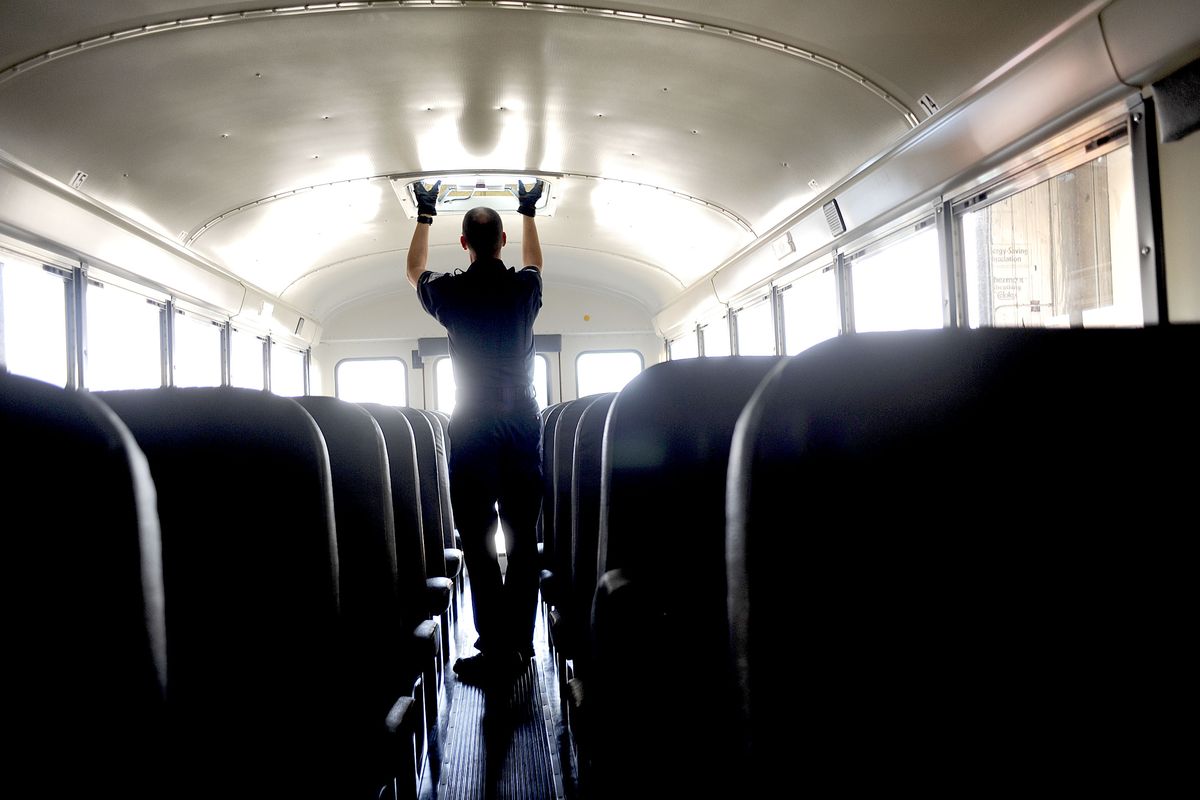Central Valley puts transport through inspection

Each school day in the Central Valley School District last year, an average of 6,495 students climbed aboard school buses to get to class. The district’s fleet of buses traveled more than 716,500 miles just to take kids to and from school. If you take into account field trips and activity trips, that mileage jumps to about 901,500 miles.
It’s a lot of time on the road for the buses, children and drivers. By law, the Washington State Patrol must inspect these buses to make sure they are safe for everyone.
This week, the WSP is inspecting 84 of CV’s 89 buses. The other five district buses are new and have already passed inspection.
Commercial Vehicle Enforcement Officer Nicholas Hopper said since 2001 the WSP has had dedicated inspectors for all 10,234 school buses statewide, even for districts that contract out bus services, such as Spokane Public Schools.
Not only are the buses inspected, but so are any support vehicles the district uses, such as the school resource officer vehicle, school vans or anything that hauls students.
Hopper uses a hand-held device called a Zonar to inspect each bus. He inputs information into the device and at the end of the day downloads the information so bus shop foreman Daryl Skomer can access it the next day.
Skomer said the district takes these inspections seriously and his crew has been preparing for it all year.
“Every bus must pass,” Hopper said.
Hopper said buses must meet state standards, which are generally higher than national standards. In Washington, buses must have a crossing arm, the seats must be taller than the national standard, there must be a side emergency exit and there must be a sign on the back of the bus stating it’s unlawful to pass the bus.
“It comes down to safety,” Hopper said of the state standards.
This year 96.4 percent of the fleet passed inspection on the first try. Minor problems were fixed on the three that didn’t pass, and they are now compliant. The district had similar results in 2011-12, when 96.7 percent of its fleet passed inspection on the first try.
When a vehicle doesn’t pass, the district and the WSP work together to make sure the vehicle is fixed. In problem districts, the Office of Superintendent of Public Instruction may step in to help.
Hopper and his team inspect 1,024 buses in six counties in Eastern Washington. The team performs a full inspection of every fleet between March and the first day of school. In addition, they also complete an inspection of 25 percent of each fleet in the winter. During that inspection, vehicles are selected randomly.
Although CV’s oldest vehicle is from 1991, Hopper said he has seen vehicles from the mid-1980s that are still on the road, taking children to school.
“Safety is No. 1,” Hopper said. “The school districts know that.”
Skomer agreed.
“We’re doing the same job,” Skomer said.